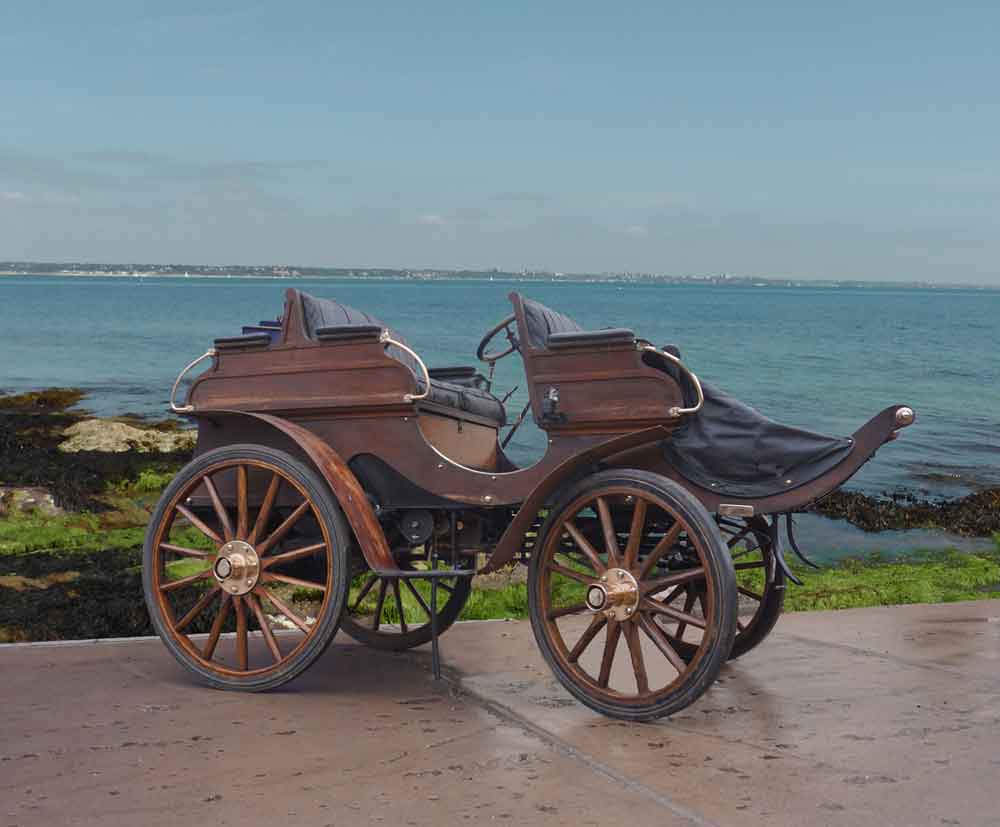Arrol Dogcart


Why did they call it a dogcart? Towards the end of the 19th century the hunting and shooting fraternity would often go off to their hunts in a horse-drawn carriage and there would be a box behind the bench seat that the dogs would be kept in. When it wasn't being used for dogs three people could sit on it, with their backs to the three people sat in the front. This was the format that the Arrol–Johnston Dogcart was built in – it was really just a wooden built horse drawn dogcart but without a horse and with a 10 horsepower twin cylinder petrol driven engine under the floor. Starting the engine required a sharp tug on a rope; and there was a hand operated brake of sorts that pushed a block against the rear tyres, which at that stage of car development were still solid. Comfort wasn't forgotten however; carriages for some time had been fitted with leaf springs and the Dogcart sported these.
The company was started by an engineer called George Johnston; he had gained experience in the past in locomotive design and although the last project he worked on – a proposed steam driven tramcar – turned into a disaster (the prototype self combusted) he believed he could make decent quality motor driven vehicle and with financial backing from Sir William Arrol (a virtually self-taught engineer who was instrumental in building several bridges, including the Forth Bridge) he gathered a team of specialists and together they created Britain's first production car.
These were manufactured from 1897 onwards. Their initial factory near Glasgow burned down in 1901 and was replaced with another one near Paisley in Scotland; and with just the odd minor modification production continued until 1907, when a vehicle that looked a little bit more like a car than a horseless carriage was introduced with an engine at the front.
During it's heyday The Dogcart was very popular – to be realistic there was little competition for it anyway – although one designed specifically for Ernest Shackleton to take on his trip across Antarctica to the South Pole proved to be useless over the type of terrain it was expected to operate on.
Under various guises and ownerships the company managed to stay afloat until it went bust in 1931; however their works football team was one of three local teams that merged to form Queen of the South Football Club, which survives until this day. This is unlike the company's post-war 1919 Victory car, the first one of which was sold to the Prince of Wales; it turned out to be a Pyrrhic victory since it broke down regularly and publicly on a royal tour of England and damaged the company's reputation for a long time to come.
Nevertheless to be fair these were the very early days of car production so teething troubles were to be expected, although apparently neither the Prince of Wales nor Ernest Shackleton really appreciated this!
Need to insure a car for a few days, a week, a month? You can apply for insurance even if you don't own the car, plus UK, EU and some Commonwealth driving licences are accepted!